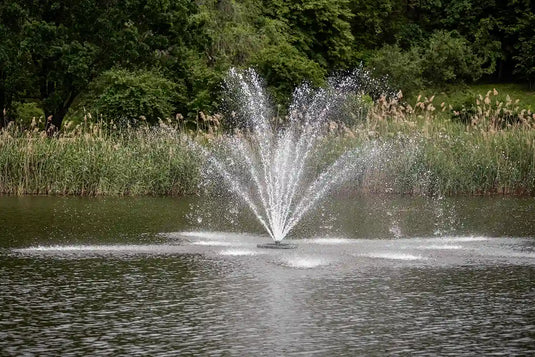That peaceful area of your garden pond is full of untapped opportunities for relaxation and fun. Imagine enjoying the beauty of nature while listening to the soothing sound of water. This complete guide shows how to build a unique dock to turn your pond into a relaxing retreat. This step-by-step guide is perfect for DIYers and homeowners looking to improve their outdoor environment. Learn how a well-built dock may bring value and enjoyment to your home, from aesthetics to recreational activities.
Choosing the Right Dock Type
When starting to build a dock, the most important thing to do is choose between two main types: stationary docks and moving docks.
Stationary docks are built to last because they are strongly anchored into the pond bed. These docks are great for homes who want to add something that will last for a long time. Even though there may be a higher initial cost, fixed docks have been known to require less upkeep over time. They are very stable, which makes them good for a wide range of leisure activities. But because they are permanent, it might be hard to get used to changes in water levels.
Floating docks, on the other hand, move easily across the water's surface as the water level changes. Because of this, they are a good choice for ponds where the water level changes often. Even though they are usually less expensive, floating docks may need more upkeep because they are out in the elements more often. They give off a temporary vibe that might not work for people who want something that will stay put.
Here's a comparative overview:
|
Feature |
Stationary Dock |
Floating Dock |
|
Permanence |
Permanent structure |
Adapts to water level changes |
|
Cost |
Higher initial cost |
Generally, more affordable |
|
Stability |
Excellent stability |
Adjusts to water level changes |
|
Maintenance |
Lower maintenance over time |
May require more frequent upkeep |
Ultimately, the homeowner's personal taste, available funds, and the specifics of the pond's setting are the deciding factors between fixed and floating docks. With these considerations in mind, you can rest assured that the dock you choose will be a beautiful and functional complement to your pond's surroundings for years to come.
Planning Your Dock
To make sure your custom-built dock fits in perfectly with your pond and meets all your requirements, careful planning is required before construction begins. To help you realize your vision for the perfect dock, we've laid down the fundamentals below.
- First Things First: Visualize Your Goals: Think on what you want to accomplish with the dock. Your structure's form and functioning will be shaped by its primary use, whether it's for fishing, swimming, or just enjoying the gorgeous view.
- Measure and Assess: Take accurate measurements of your pond and carefully evaluate available space. Consider the size and shape of your pond, noting any abnormalities that could affect dock location. Your dock will blend into the scenery and enhance its beauty with this step.
- Height Considerations: Determine the optimal height of your dock relative to the water level. This is important for accessibility, safety, and aesthetics. Well-designed docks should match the pond's curves and provide simple access while blending in.
- Material and Style Selection: Select dock materials and styles that match your taste, budget, and desired appearance. Classic wood and low-maintenance composite materials have different benefits. Consider longevity, maintenance, and how the material fits your property.
Design Gathering Materials And Tools
If you want your custom-built dock to last, you need to use materials and tools that have been hand-picked. A few key Materials include:
- Strong fasteners to ensure the dock's structural integrity
- High-quality lumber for construction
- Long-lasting pilings to anchor it to the ground
- Resilient deck boards cover the walkway.
Choosing high-quality materials is crucial for the dock's durability because they can resist the effects of weather and water.
The building materials and equipment are of equal importance. A level and other measuring tools ensure accuracy, while power tools like a drill and circular saw speed up the cutting and fastening procedures. For intricate tasks, hand tools such as a wrench and hammer are essential. If you want your custom-built dock to last, it all starts with using high-quality materials and making sure you have the correct tools.
Building the Dock Frame
Here are the simple steps to build a strong frame for your own dock.
- Material Choice: Get treated lumber that is the right size for the frame and makes sure it fits around the pond.
- Frame Assembly: Set the joints in place with galvanized screws to make the frame last. Connect the board pieces to make the frame.
- Stability Improvement: Make the frame more stable by adding vertical bracing and making sure that each part is carefully measured and lined up.
- Safety First: Make sure you wear the right safety gear to keep yourself safe during building.
- Leveling: Use a level to make sure the frame is flat and balanced, which is important for the general stability of the dock.
- Application of Fasteners: Pick the right fasteners, like deck screws and carriage bolts, to handle tough conditions.
- Focus on Precision: Do each step carefully ensuring not only stability but also the foundation for a secure and enduring custom-built dock.
Attaching the Decking
- Board Selection: Select deck planks that match the dock's purpose and design, as well as durability and visual appeal.
- Smooth Connection: Attach deck boards to the frame for a strong and smooth connection. Starting from one end, work methodically.
- Fastening Techniques: Choose appropriate fastening methods, such as screws or nails, depending on the deck material. Even spacing gives a clean look.
- Protective Measures: Apply sealants and coatings to extend decking lifespan and prevent water damage and aging.
- Aesthetic Appeal: To improve the appearance and functionality of your custom-built dock, pay attention to the alignment and pattern of the deck boards.
Anchoring the Dock
- Anchor Selection: Select the appropriate anchoring mechanism for your dock, such as pilings, posts, or floating anchors, based on pond conditions.
- Installation Process: To ensure stability, carefully install the anchoring system and distribute weight equally. Secure pilings or stakes to the pond bottom.
- Floating Anchors: When employing floating anchors, place them strategically to react to water level variations.
- Local Regulations: Prioritize safety by studying local legislation and following recommendations to prevent environmental effects and ensure compliance.
- Safety Standards: Follow specified installation instructions to ensure stability and safety for your custom-built dock, ensuring enduring enjoyment.
Getting the Dock Setup
Add creative touches to your custom-built dock to make it stand out. For better practicality and aesthetics, think about handrails, railings, lighting, and seats. To make the dock a comfortable and multipurpose place to relax and enjoy, choose out dock items that go with its style and function.
Maintenance and Care
Regular maintenance is key to extending the life of your pond dock. Preserve beauty and functionality by cleaning, staining, and repairing as needed. If you want your dock and pond-side refuge to last for years to come, it's important to fix any structural problems as soon as possible to avoid damage.
A custom-built dock can make your time at the pond more enjoyable. It can be an entrance to relaxation and beauty. With the information in this guide, you can start building a lake dock. Thanks for being here. Check out our store to buy pond materials and other items that will help you make your dream pond a reality. Have fun building!





